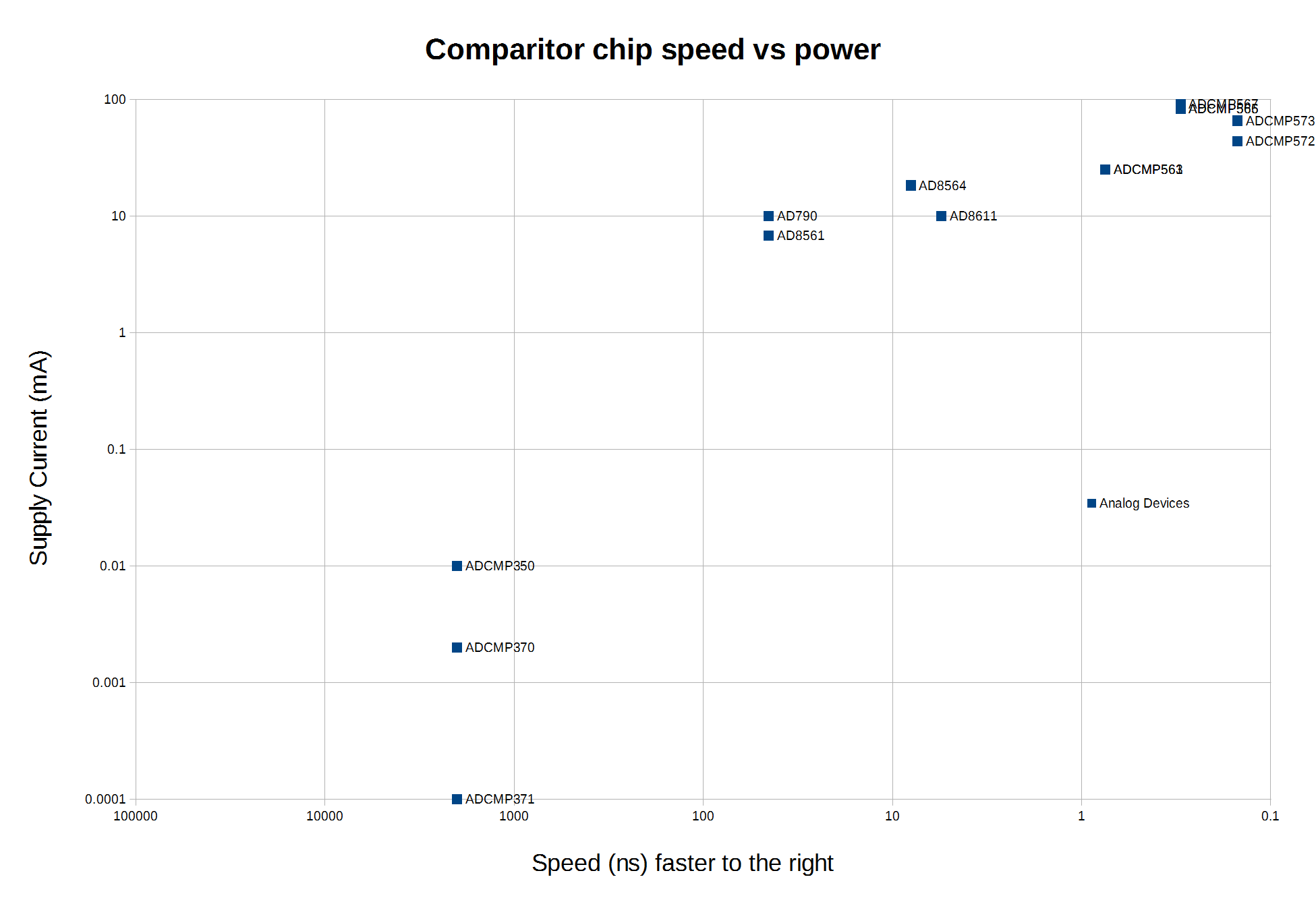
.
This chart shows Analog Devices comparators. You can see ADI has the fastest chip, and that that speed requires a significant amount of power. You can also note they don't offer dozens of chips, just ones targeted for specific applications.

.
This chart of Linear Technology's chips show they are not as fast. The chart makes clear LT's strategy. They make fast chips and low-power chips. They ignore the more mundane middling performance chips, which tend to be low-profit "jellybeans".






